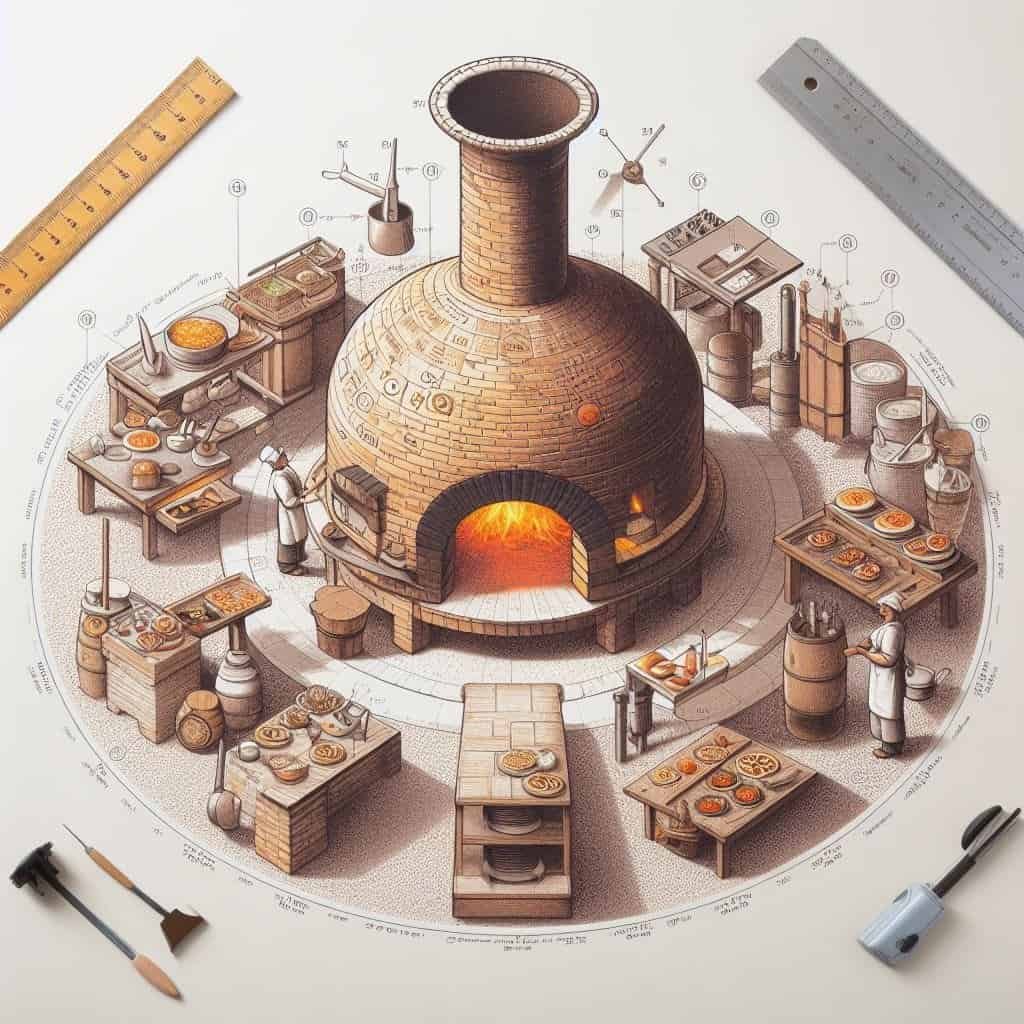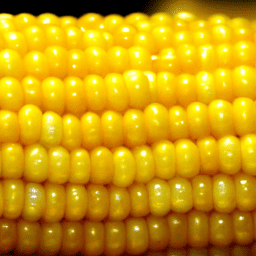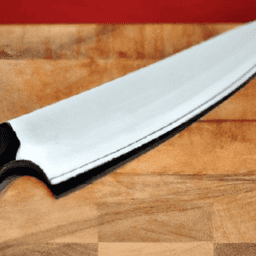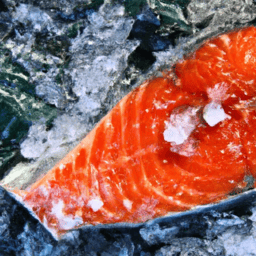How Do Wood Fired Pizza Ovens Work
Are you a pizza connoisseur looking to take your culinary skills to the next level? Look no further to understand how do wood fired pizza ovens work: Your Handy Guide, the secret behind the exquisite taste of artisan pizza. In this guide, you’ll discover the magic behind the wood-fired cooking process and explore the techniques and benefits of cooking with a wood-fired pizza oven.
Key Takeaways:
- Learn about the process of cooking pizza in a wood-fired oven and how it differs from conventional ovens
- Understand the essential components of a wood-fired pizza oven, including temperature control and ventilation
- Explore the unique flavors and benefits of wood-fired cooking, including faster cook times and enhanced crust texture
- Discover design and construction options for wood-fired pizza ovens, including traditional and modern styles
- Learn essential tips for operating and maintaining your wood-fired pizza oven, including fuel options and cleaning techniques
The Basics of Wood Fired Pizza Ovens
The process of cooking a pizza in a wood-fired oven is quite different from using a conventional oven. The intense heat generated by burning wood creates a unique flavor profile and gives the crust a crispy texture that is hard to achieve with other cooking methods.
The optimal temperature for a wood-fired pizza oven is around 800℉ (427℃). Achieving and maintaining this temperature requires careful attention to the oven’s design and construction. Wood-fired pizza ovens come in various shapes and sizes, and the design elements can greatly impact the oven’s performance. Factors such as the thickness of the oven walls and the type of insulation used all play a crucial role in creating the perfect cooking environment.
The construction of a wood-fired pizza oven can be a complex process, but it’s essential to ensure the oven is safe and functions correctly. Materials such as firebricks, refractory cement, and insulation are commonly used in constructing these ovens.
Wood Fired Pizza Oven Process
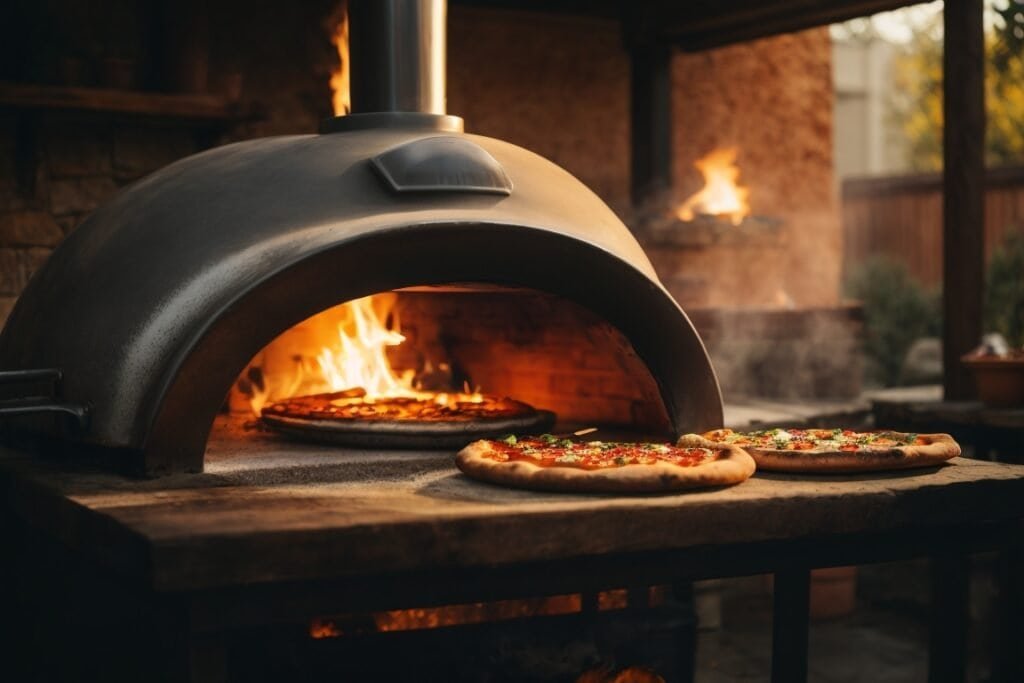
The process of cooking a pizza in a wood-fired oven involves placing the pizza directly on the oven floor, which is preheated to the optimal temperature. The intense heat generated by burning wood quickly cooks the pizza, resulting in a crispy crust and perfectly melted cheese.
Keeping the fire burning consistently throughout the cooking process is crucial to maintain the optimal temperature. This requires adding wood logs at regular intervals and using a tool to move the logs around and maintain the fire’s position.
Wood Fired Pizza Oven Temperature
The optimal temperature for a wood-fired pizza oven is around 800℉ (427℃). Achieving and maintaining this temperature requires careful attention to the oven’s design and construction. The oven’s walls and insulation must be thick enough to retain heat and prevent heat loss.
The wood you choose for your wood-fired pizza oven can significantly impact the flavor of the pizza. For example, hardwoods like Oak and Hickory are known for imparting a smoky flavor, while fruitwoods like Apple and Cherry tend to add a sweet note to the food.
| Type of Wood | Flavor Profile |
|---|---|
| Oak | Sweet, subtle flavor, popular for outdoor cooking and BBQ smoking, adds a nuanced sweetness |
| Hickory | Stronger, smoky aroma; can be too smoky for some, especially with delicate toppings |
| Apple | Sweet, subtle flavor; popular for outdoor cooking and BBQ smoking, adds a nuanced sweetness |
| Cherry | Sweet, a bit deeper flavor compared to Apple; goes well with almost everything |
| Maple | Sweet, lighter than Cherry; suitable for poultry and pork |
These flavor profiles can complement or contrast with your pizza’s toppings, enhancing the overall taste experience. For instance, the sweet notes from Apple or Cherry wood can complement cheese-heavy pizzas, while the smoky flavor from Oak or Hickory can pair well with meats like beef or pepperoni.
It’s important to note that while the optimal temperature for a wood-fired pizza oven is around 800℉, the temperature can vary depending on the type of pizza being cooked. Thinner crust pizzas may require a slightly lower temperature, while thicker crust pizzas may require a higher temperature to ensure the crust is fully cooked.
| Temperature | Pizza Type |
|---|---|
| 800℉ (427℃) | Neapolitan-style pizza |
| 750℉ (399℃) | Thinner crust pizzas |
| 850℉ (454℃) | Thicker crust pizzas |
Now that you understand the basics of wood-fired pizza ovens, it’s time to explore the various cooking techniques used in these traditional cooking appliances. In the next section, we’ll dive into the world of wood-fired pizza and discover the secrets behind achieving the perfect crust and flavor profile.
Cooking Techniques in Wood Fired Pizza Ovens
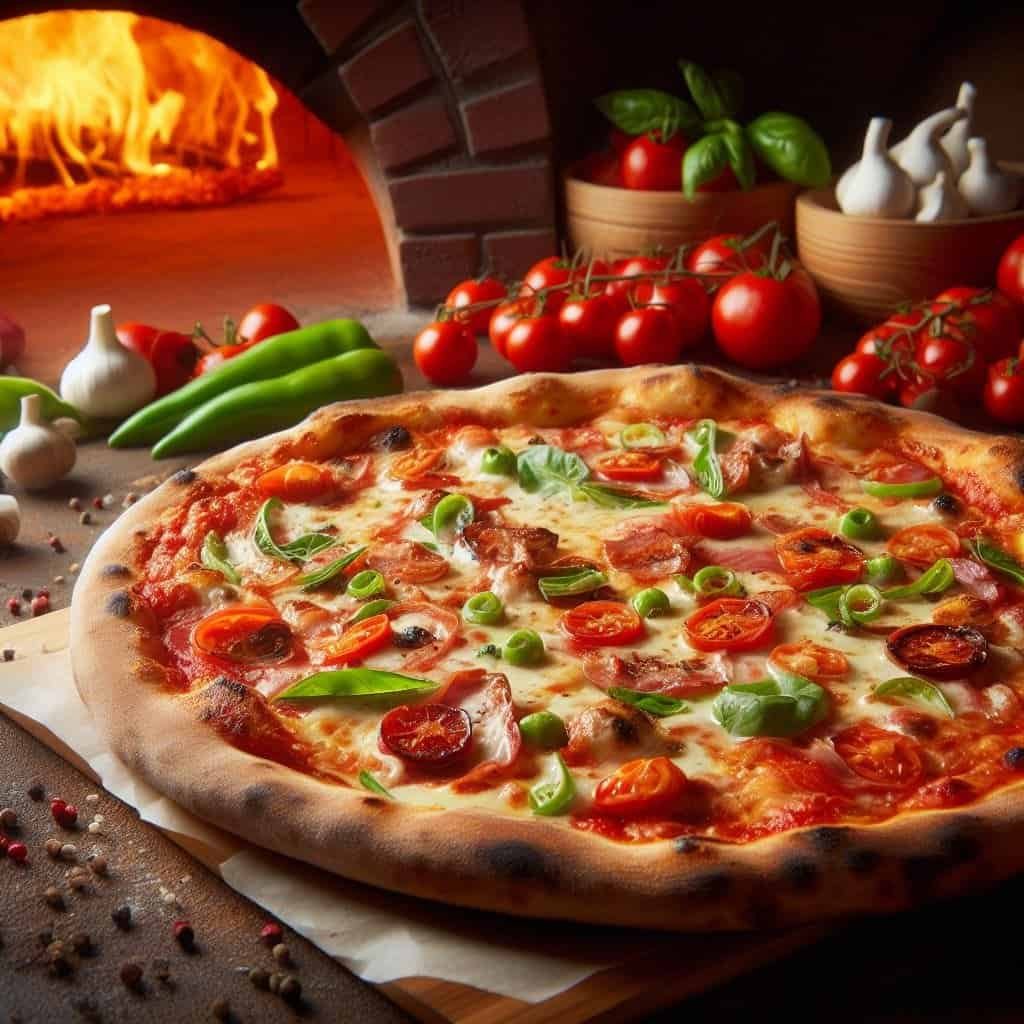
Cooking pizza in a wood-fired pizza oven is an art form that requires a deep understanding of the oven’s mechanics and techniques. Here are some essential tips to help you master the art of cooking with a wood-fired pizza oven.
Use high-quality ingredients
The key to achieving the best flavors in your wood-fired pizza is to use high-quality ingredients. Choose the freshest vegetables, juicy tomatoes, and flavorful cheeses to create a mouth-watering masterpiece.
Keep the oven at the right temperature
The optimal temperature for a wood-fired pizza oven is between 700-800 degrees Fahrenheit. This high temperature ensures that your pizza cooks evenly and quickly, giving you the perfect crispy crust and melty cheese. Use a thermometer to measure the temperature and adjust the fire accordingly.
Master the art of pizza-making
Every pizza master has their own technique, but there are some general rules to follow. Stretch the dough gently to avoid tearing, add the sauce and toppings lightly, and rotate the pizza regularly to ensure even cooking. Experiment with different toppings to find your signature style.
Practice proper fire management
Wood-fired pizza ovens require a steady flame to maintain the temperature. Start with smaller pieces of wood and gradually add larger ones as the fire builds. Keep an eye on the oven to make sure it doesn’t overheat or cool down too quickly.
Experiment with different wood types
The type of wood you use can greatly impact the flavor of your pizza. Experiment with different wood varieties such as oak, cherry, or hickory to find the one that works best for you.
Embrace the imperfections
Wood-fired pizza is all about the imperfections – the slightly charred crust, the oozy cheese, and the uneven toppings. Embrace these imperfections and let the natural flavors of the ingredients shine through.
Cooking with a wood-fired pizza oven requires skill, patience, and a love for the art of pizza-making. With the right techniques, you can create mouth-watering pizzas that will transport you to the streets of Naples.
The Benefits of Wood Fired Pizza Ovens
Let’s face it: there’s nothing quite like the taste of a wood-fired pizza. But beyond the exquisite flavor, there are several other benefits to cooking with a wood-fired pizza oven.
First, wood-fired cooking is a healthier alternative to other cooking methods. Wood-fired ovens operate at high temperatures, allowing the food to cook quickly and thoroughly. This means that the food retains more nutrients and moisture, resulting in a healthier and more flavorful meal.
Second, wood-fired pizza ovens are incredibly versatile. While pizza is the star of the show, you can also use your oven to cook a range of other dishes, from roasted vegetables to baked bread and grilled meats.
Third, wood-fired cooking is eco-friendly. Unlike traditional gas or electric ovens, wood-fired ovens do not emit harmful pollutants into the environment. And since wood is a renewable resource, it’s a more sustainable cooking option.
If you’re interested in exploring the world of wood-fired cooking, there are plenty of recipes and techniques to experiment with. Try your hand at making homemade pizza dough and marinara sauce, or explore the art of slow-cooking meats in a wood-fired oven. The possibilities are endless.
So whether you’re a seasoned chef or a beginner, the benefits of cooking with a wood-fired pizza oven are undeniable. From the unique flavors to the endless cooking possibilities, embrace the art of wood-fired cooking and elevate your culinary skills to the next level.
Design and Construction of Wood Fired Pizza Ovens
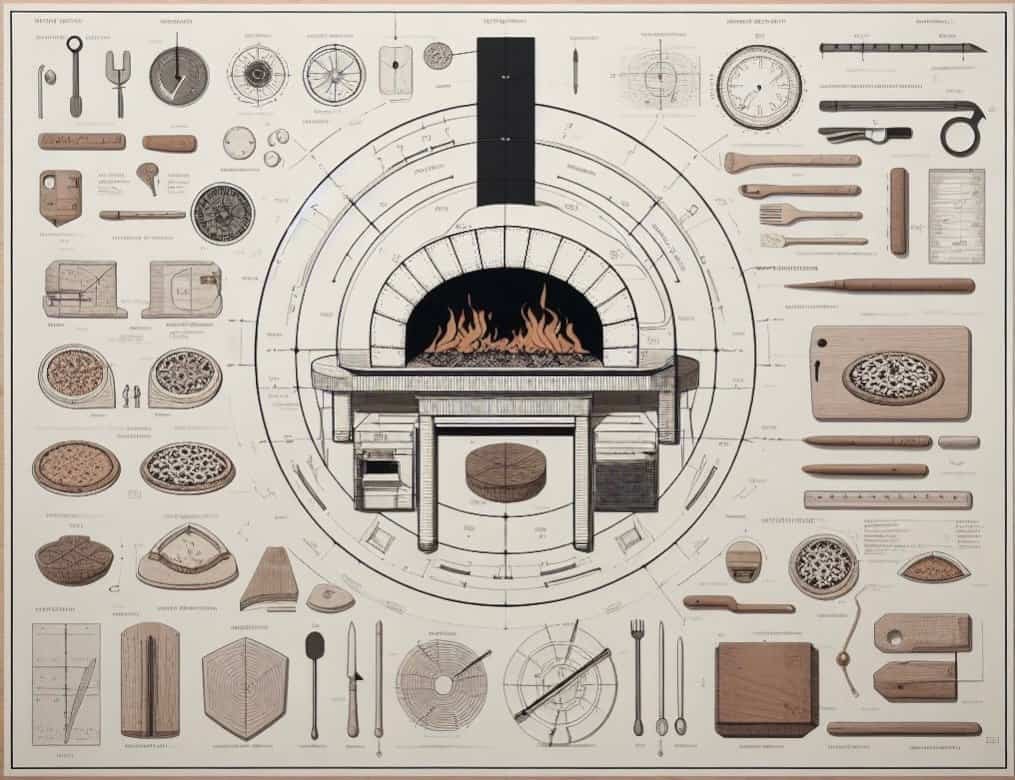
When it comes to wood-fired pizza ovens, design, and construction are crucial factors that contribute to the overall cooking experience. Traditional pizza ovens are built using a variety of materials, including brick, concrete, and stone.
The design of the oven affects the cooking process, as well as the heat retention and distribution. The oven walls’ shape, size, and thickness all play a role in cooking. If you are considering building your own wood-fired pizza oven, it is essential to research and understand the design principles behind traditional pizza ovens.
One crucial aspect of pizza oven construction is insulation. Proper insulation is necessary to retain heat and achieve optimal cooking temperatures. Insulation materials commonly used in pizza oven construction include ceramic fiber and refractory mortar.
Another important consideration is the type of wood-fired oven you want to build. There are several traditional styles of pizza ovens, including the Neapolitan, Roman, and Tuscan styles. Each style has a unique design, with different heating and cooking characteristics.
Operating and Maintaining a Wood Fired Pizza Oven
Now that you have your beautiful wood-fired pizza oven, it’s time to learn how to operate and maintain it properly to ensure delicious results and longevity.
Operating Your Pizza Oven
The first thing to consider is the type of fuel to use in your wood-fired pizza oven. Hardwoods like oak, hickory, and maple are great options as they burn hot and slow, providing even heat and creating a beautiful smoky flavor. Avoid using softwoods like pine or cedar, as they burn quickly and create a resinous smoke that can ruin the taste of your food.
Before starting a fire in your oven, be sure to clean out any ash or debris left from the previous use. Then, start a small fire with kindling and allow it to grow slowly until the oven reaches the desired temperature. You can use an infrared thermometer to check the temperature of the oven floor, which should be around 750-900°F for perfect pizza cooking.
When it’s time to cook, push the fire to the side of the oven and use a long-handled peel to slide the pizza onto the hot stone. Rotate the pizza occasionally to ensure even cooking, and remove it from the oven when the crust is crispy, and the cheese is melted to perfection.
Maintaining Your Pizza Oven
Proper maintenance is essential to keep your wood-fired pizza oven in top condition for years to come. After each use, brush out any ash or debris from the oven floor and walls using a stiff-bristled brush. For difficult stains or spills, use a damp cloth with a gentle cleaning solution, but be sure to avoid harsh chemicals that can damage the oven’s materials.
Regularly check the oven’s insulation and replace any damaged or missing parts, as this can affect the oven’s heating and cooking ability. Keep an eye on the chimney and flue to ensure proper ventilation and prevent any buildup of creosote, a dangerous and flammable substance that can cause chimney fires.
Finally, store your oven properly during the off-season to prevent any water damage or cracking from freezing temperatures. Cover the oven with a waterproof cover or tarp, and store any removable parts in a dry and secure location.
By following these tips for operating and maintaining your wood-fired pizza oven, you’ll be serving up delicious and authentic pizza for years to come.
Wood Fired Pizza Oven Cooking Tips and Recipes
Now that you have mastered the basics of wood-fired pizza ovens, it’s time to explore some expert cooking tips and delicious recipes.
The first step in cooking with a wood-fired pizza oven is to get the temperature just right. Unlike a regular oven with a thermostat, a wood-fired oven requires some practice to get the temperature right. Typically, you want the temperature to be between 700-900 degrees Fahrenheit. This will ensure that your pizza cooks evenly and quickly, resulting in a perfect crust every time.
When it comes to toppings, keep in mind that less is more. Traditional margherita pizza only has three toppings: tomato sauce, mozzarella cheese, and fresh basil. Experiment with different flavor combinations, but avoid overcrowding the pizza with too many toppings, as this can result in a soggy crust.
Now, let’s talk about wood-fired grill cooking. If you have a wood-fired grill, you can use it to grill vegetables, meats, and even desserts. The grill’s high heat gives food a smoky flavor that can’t be replicated with gas grills. When grilling with a wood-fired grill, remember to keep the food close to the flames and turn it frequently to ensure even cooking.
If you want to expand your cooking repertoire, consider investing in a traditional pizza oven. These ovens can be used for baking bread, roasting vegetables, and grilling meats. With a little bit of practice, you can become a master of outdoor cooking with a wood-fired oven.
Pizza Recipes You Must Try
- The Umammi Boom Pizza
- Simple Pizza Sauce Recipe
- Classic Margherita Pizza Recipe
- Wild Mushroom White Pizza
- Coppa and Salumi Pizza
- Green Chile Pizza with Chorizo
- Buffalo Chicken Pizza
- Ooni Pizza Dough Recipe (for Pizza Ovens!)
- How to Make Great Pizza in an Outdoor Pizza Oven
- Pizza Oven Recipes — Ooni USA
So fire up your wood-fired pizza oven or grill and start experimenting with different recipes and techniques. With a bit of practice, you’ll be able to achieve the perfect wood-fired pizza every time and impress your friends and family with your culinary skills. Enjoy!
FAQ
Q: How do wood-fired pizza ovens work?
A: Wood fired pizza ovens heat the oven chamber by using a wood fire. The heat from the fire is absorbed by the oven’s walls, floor, and ceiling, creating a radiant heat source. This radiant heat cooks the pizza quickly and evenly, giving it a unique charred and smoky flavor.
Q: What is the process of cooking pizza in a wood-fired oven?
A: Cooking pizza in a wood-fired oven involves preheating the oven to a high temperature, typically around 700-900 degrees Fahrenheit. The pizza is then placed directly on the hot oven floor or on a pizza stone inside the oven. The intense heat from the fire cooks the pizza in a matter of minutes, resulting in a crispy crust and delicious toppings.
Q: What is the optimal temperature for wood-fired pizza ovens?
A: The optimal temperature for wood-fired pizza ovens is typically around 700-900 degrees Fahrenheit. This high temperature allows for quick and even cooking of the pizza, resulting in a crispy crust and perfectly melted cheese.
Q: What are the different designs and construction techniques used in wood-fired pizza ovens?
A: Wood-fired pizza ovens come in various designs, including dome-shaped, barrel-shaped, and igloo-shaped ovens. These designs help retain heat and distribute it evenly throughout the oven. Construction techniques can vary, but common materials used include brick, clay, and refractory concrete. Insulation is also important to prevent heat loss and maximize the oven’s efficiency.
Q: What are the cooking techniques used in wood-fired pizza ovens?
A: Wood-fired pizza ovens allow for various cooking techniques, including quickly baking pizzas at high temperatures, charring the crust and giving it a smoky flavor. Other techniques include cooking directly on the oven floor for a crispy bottom, using a pizza peel to rotate the pizza for even cooking, and utilizing the oven’s residual heat to slow-cook other dishes such as meats and vegetables.
Q: What are the benefits of cooking with a wood-fired pizza oven?
A: Cooking with a wood-fired pizza oven offers several benefits. The intense heat from the fire creates a unique and delicious flavor profile in the pizza. The quick cooking time allows for a crispy crust while keeping the toppings flavorful and juicy. Additionally, wood-fired ovens can be used for other types of cooking, such as baking bread, roasting meats, and grilling vegetables.
Q: How do you operate and maintain a wood-fired pizza oven?
A: To operate a wood-fired pizza oven, you need to light the fire and control the heat properly. Building a small fire with kindling and gradually adding larger pieces of wood can help achieve the desired temperature. Regular maintenance includes cleaning the oven floor, removing ash, and periodically checking for any cracks or damage in the oven walls. It’s also important to store wood properly and use the right type of fuel for optimal performance.
Q: What are some wood-fired pizza oven cooking tips and recipes?
A: Some cooking tips for wood-fired pizza ovens include preheating the oven thoroughly, using high-quality ingredients, and rotating the pizza for even cooking. As for recipes, the possibilities are endless. Classic margherita, pepperoni, and mushroom pizzas are always crowd-pleasers, but you can also get creative with toppings like prosciutto, arugula, and truffle oil. Experiment with different dough recipes and try adding unique ingredients to create your signature wood-fired pizza.
Q: Can wood-fired pizza ovens be used for cooking other than pizza?
A: Yes, wood-fired pizza ovens offer versatility beyond just pizza. They can be used for baking bread, roasting vegetables, grilling meats, and even making desserts. The intense heat and smoky flavors from the wood fire add a unique touch to any dish cooked in the oven.

